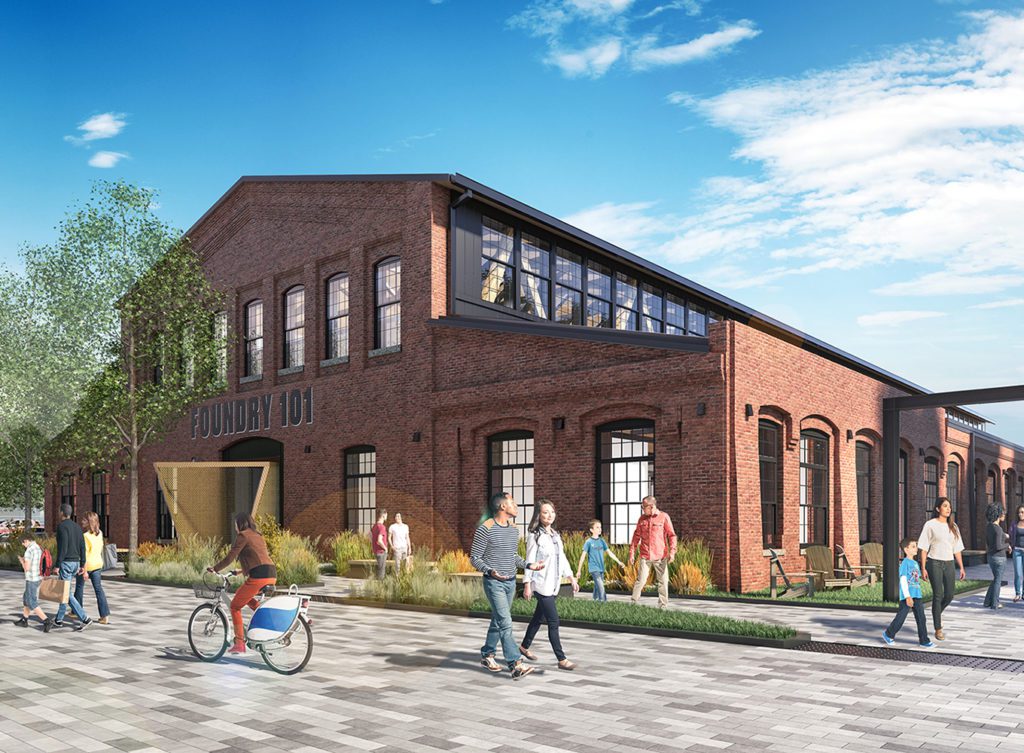Ten Ways to Design Architecture for Wildlife
Justin Crane, FAIA explains ten different ways architects can design while lessening negative impacts on wildlife and natural habitats.
View PostArchitects know the power good design can have to attract and cultivate communities. Done right, it can result in a development that reaches beyond its programmatic purpose. Using benchmarks established by industry groups like USGBC, ULI, ILFI, we can point to best practices that are achievable and yield big results. Here are ten ways (there are tons more!) and a few of our current projects that show how to serve a community through architecture:

The Hilton Garden Inn Boston Brookline opened at the beginning of Summer and is a prime example of responsible urban infill. What was once the site of a defunct gas station at a prominent intersection of Brookline and Boston near the Longwood Medical Area is now a pedestrian-friendly and welcoming community hot spot. Beyond welcoming hotel guests, the inviting ground floor is designed to welcome the public. A light-filled lobby, a restaurant designed around historic, local references and a terrace where guests dine next to the Emerald Necklace make this hotel much more than a place to rest your head. Our design reflected a to be safer and accommodating for pedestrians and cyclists, the city and landscape designers placed in new.
Our team worked extensively with the town during a rezoning effort to permit the hotel to be sited at this edge of Brookline and signify as a gateway into Boston. During the design process, we collected feedback from the community to arrive at a design that all stakeholders embraced so not only were the developer and owner pleased, the entire town benefits from the project.


Slated for completion in 2022, The Foundry will be a busy hub for community activities. This revitalized iron foundry from 1890 is located on Rogers Street at the intersection of residential East Cambridge and the Kendall Square Innovation District. Its location will make it a convenient spot for a range of publics, including afterschool activities for children and teens, community groups and local artists. An important part of the Foundry’s usability is mixed-use programming; it will house performance venues, maker space, cooking and crafts workshops, interpretive exhibits, and leasable office space, with a portion of dedicated office space for non-profits, on the upper floors.
Throughout this project, we worked with the City of Cambridge to make sure this project will serve its community to its fullest. We asked community members what they need in their neighborhood, what they expect from civic resources, and sculpted the Foundry around their input. What better way to design for the community than to ask them yourself?


Transforming an existing building is a terrific catalyst for revitalization. The August opening of the Four Seasons Hotel and Private Residences New Orleans marked a years-long effort to reimagine the iconic, but long-empty former World Trade Center at the foot of Canal Street. Beyond guestrooms with remarkable views and a mouth-watering mix of NOLA-influenced restaurants and bars, this renovation sparked a cascade of community-centered transformations. Early next year tourists and locals can enter an immersive, street-level exhibit that will whisk them to the panoramic summit for a multi-media attraction highlighting the city’s rich history, urban fabric and unique culture.
Spanish Plaza, essentially the front porch for the river-facing Four Seasons, will be further enlivened with our improvements to the Audubon Nature Institute’s Aquarium of the Americas, which include a new water-facing lobby to greet guests walking along the river. The Audubon’s Insectarium is also being redesigned to create a new kind of visitor experience that brings bugs into a whole new light with larger-than-life imagery and interactive digital projections. The new attractions will support tourism, serve school groups and youth programs, and educate the public in an engaging way about our natural world.
Finally, a new multi-modal Canal Street Ferry Terminal will sit between the Aquarium and the Four Seasons. A much-needed public amenity, the new terminal will improve connections between downtown New Orleans and Algiers, increasing access to city’s commercial and jazz fest regions and creating a safe place to wait for one’s transit. Together, these various projects will create a beacon of civic culture and excitement.

Justin Crane, FAIA explains ten different ways architects can design while lessening negative impacts on wildlife and natural habitats.
View PostThis World Oceans Day, we're celebrating by highlighting the ambitious work of some of our nature-focused clients with tips for how everyone can help protect the Earth's blue wonders.
View PostCambridge Chronicle-Tab - June 29, 2022
CambridgeSeven celebrates the opening of the Foundry community center in Cambridge
View Post